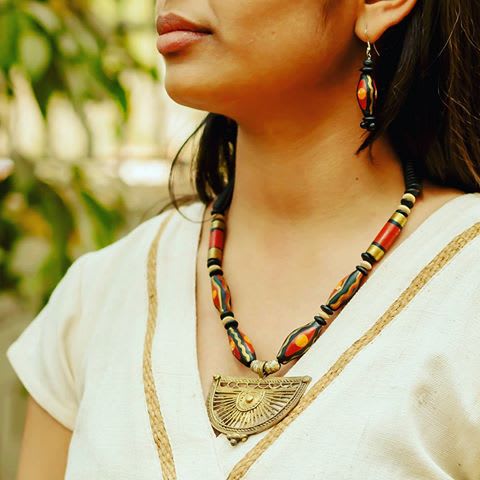The oldest use of ornaments dates back to around 40,000 years. Ornaments has been made using everything from bones and beads to gold and silver. Jewellery has been a symbol of culture, social status, beauty and significance throughout history.
When students learn about jewellery in jewellery designing courses, they should know about the evolution of jewellery preferences and trends. Today jewellery designers interestingly try to reinvent the old designs and manners of jewellery making.
The oldest practices of jewellery making started in Africa. Their ornaments were made with wood, bones, egg shells, beads, clay and stones. The advancement in civilisation and culture brought about a variety of materials used to craft jewellery. The concept of style also changed from era to era, decade to decade and even year to year!
Hand-crafting was the way of jewellery making for a major part of history. It was around 7000 years back that the first copper jewellery came into being. Since then, jewellery has been made from metals like gold, silver and platinum. Diamonds, pearls and precious stones, all got added to jewellery fashion.
Towards the 20th century and since, the preferences in jewellery designing began to shift from embellishments to expressionist wear. Costume jewellery gained prominence and hand-crafted jewellery became fashionable again.
Today, the best jewellery designing course also includes this subject of discussion as the rise of hand-crtadted jewellery isn’t a new trend. It’s been prevalent since the beginning of time and will continue to reign! In a way, jewellery design has come full circle.
There are 3 kinds of hand-crafted jewellery designing that are currently in vogue:
Terracotta Jewellery
Terracotta has come a long way and is trending. The word “terracotta” means “baked earth”. As the name suggests, it’s jewellery made by baking a certain type of clay. Terracotta was actually used to create idols of deities, potteries and statues. This art dates back to the Indus Valley civilisation.
The art is kept alive in India in places like Pushkar in Rajasthan, Bishnupur in West Bengal and few regions of East Uttar Pradesh. Making terracotta jewellery takes considerable effort. It involves making the clay, moulding it to desired shape, sun-baking it and painting it for completion.
Terracotta ornaments are appealing because of the scope to mould a variety of rustic idols, shapes and insignia. They are fashionable and goes with ethnic and western wear. Terracotta jewellery is a big part of contemporary jewellery including items like bangles, earrings, pendants, bracelets and rings.
Terracotta jewellery is not sturdy enough for rough handling and though mostly water-resistant, should better be kept from water contact.
Polymer Clay

Polymer clay is a synthetic clay produced in a variety of colors. It’s a popular material used to craft hand-made jewellery. It’s not a true clay as it is made of fine particles of PVC unlike actual clay which is made up of particles of silicate.
Polymer clay is malleable and mouldable to different shapes. It can hence be used to create all kinds of artistic stuff that can be shaped out of clay. The added advantage is that it takes only lower heat levels to fire it when compared to clay. The color and size also don’t change while firing.
Polymer clay can be used to make beads, bracelets, pendants and necklaces. The clay is sturdier and being flexible can easily take shapes in a variety of sizes.
The technique of crafting polymer clay jewellery is taught in almost all modern jewellery design institutes, including Hamstech!
Floral Jewellery

The new craze is to create jewellery using flowers. Bridal make-up today is adopting floral jewellery. This is in fact not novel as this was a practice in old times especially in Indian culture. The re-emergence of floral jewellery is the sign of approbation of an age old fashion by its modern admirers.
The floral ornaments are made from a variety of flower types. The making process takes good planning and effort to first procure the needed flower, then preserve it and afterward craft them into ornaments. The process is completed around the occasion it is meant for.
This fashion of jewellery making is even achieved by applying 3D printing to create flowers easily. Though artificial flowers can replace the original ones, the real essence of this style is in using real flowers.
Hamstech Institute keeps students abreast with all the latest trends in fashion and traditional jewellery designing. As a model jewellery design school, it directs the imagination of students in all possible directions of creativity.


